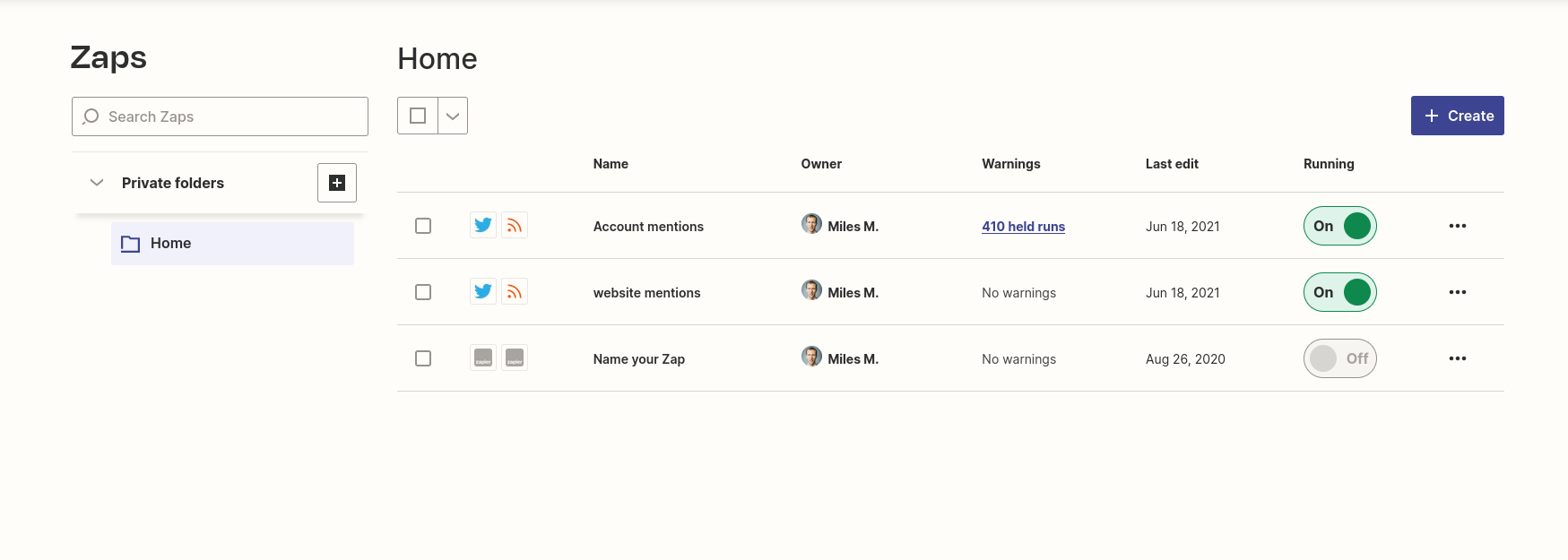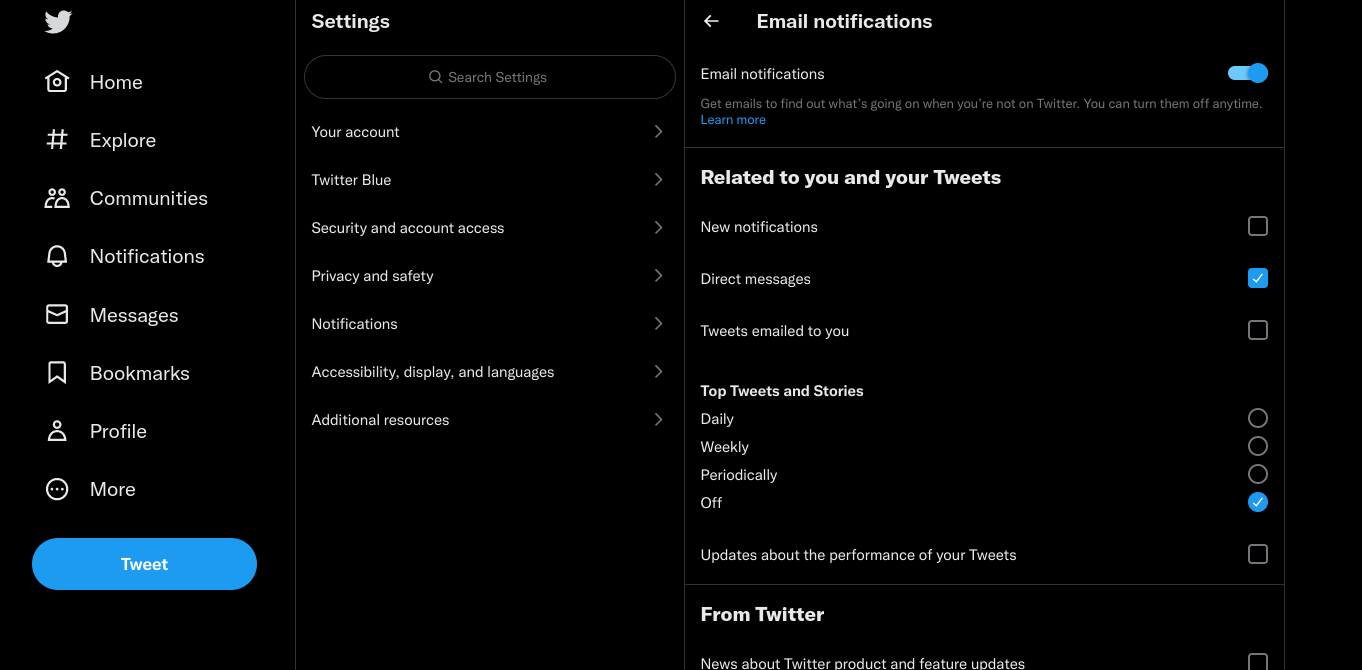There’s a sound to the Twitter timeline. Nobody is quite sure when it showed up, and most people have normalised it, but it’s there all the same. It’s this.
Different people have different tolerances to it, but many of the smartest people I know, people I look up to, have self-imposed rules about Twitter consumption: Only one afternoon a week, only at conferences, etc. Many are on and off again with it, taking periodic breaks to detox.
It’s hard. It’s not ALL bad. I’ve had lovely interactions. I’ve a couple of tremendous opportunities come my way… But objectively, I have to admit, the signal to noise ratio is very poor, and Twitter is very very good at hooking me in with that sweet but oh so toxic outrage.
I recently did an experiment where I decided to time how long it took Twitter to show me a tweet that outraged me from a cold start. The very first tweet it showed me was a near miss - mildly annoying - but after only 35 seconds the algorithm hit pay dirt. Fuck this Conservative council and their backward attitudes to cyclist and pedestrian safety.
I encourage you to repeat this experiment for yourself. At the very least it shouldn’t take very long.
The problem with outrage is that it has the ability to spill out through the screen and affect my mood. It affects my outlook on the world, the random humans I encounter, and in particular my optimism for the future.
So for a while now I’ve been looking for safer ways to engage with Twitter, and despite recent relapse, I have learned a couple of techniques which are now coming back to the fore in the wake of megalomaniacs gone wild.
I shall now describe them.
Syndicate your posts
The idea here is that you try to make posts without getting irradiateddistracted by the froth and bubble of the Twitter timeline and notifications.
You draft posts in a third party application which then posts them for you on your Twitter timeline, and possibly simultaneously to other services e.g. LinkedIn, the Fediverse (Mastodon) etc. This could be a simple Twitter client, or a whizzbang influencer control centre.
Unfortunately, a lot of these apps are paid, although the cost is usually not severe. I chose micro.blog to do this, because I liked the fact it also collected my posts into an automatically generated Hugo blog, which means even if Twitter Dies in a Fire (increasingly likely by the hour), I’ll still have everything I have posted there.
You’re probably asking: But what about the reply tweets?! Which is fair, because these have the potential to be very (if rarely) rewarding. Read on for the answer.
Consume Twitter as feeds
You can free yourself from the influence of The Algorithm to some degree by cheating it. Many RSS reader apps will let you treat individual Twitter users’s tweets as RSS feeds to be read at your leisure.
So say for example you want to keep your finger on the pulse of #rstats Twitter, but you never want to look at Twitter, you can collect a sample #rstats of tweeters and suck their tweets into your reader under the category #rstats. I have a pool of about 30.
Now you’ll have access to a perfectly chronological feed of #rstats flavoured activity that will help keep the FOMO at bay.
The feed reader I use for this is Feedbin. One limitation is that Feedbin does not have the ability to filter the tweet feed by hashtag. So you might need to be a bit picky about who’s in your topic sample. Feedbin does give you the option to exclude retweets, or to only include tweets with links or media, configured on a per user basis, which can help tighten things up.
Aside from the RSS readers, there are web integration / automation services that allow you to turn Twitter activity into RSS feeds at a more granular level, and that is how you can monitor replies to your syndicated posts. Zapier has a suite of Twitter integrations that can turn account mentions (replies or tags) into RSS feeds that you can subscribe to.
So rather than get intrusive notifications, your replies turn into a list behind a link in your feed reader. You can deal with these in batch mode - or not at all!
I use two ‘zaps’ on Twitter - one that looks for mentions of my website, and one that looks for mentions of my handle. I only use the free tier, which I think gives me a couple of hundred RSS feed items per month. Most of the time I’m under that, but occasionally when I create something that gets a bit of traction, my quota gets consumed all in one go.

I try to convince myself that rather than being a problem, this limit on my engagement is a feature.
If this idea interests you it’s worth shopping around the various web automation services. Pricing models change all the time. Or roll your own!
Receive DMs as Email
Who knows if this will persist, but at present Twitter currently gives users the ability to receive email notifications for DMs:

I’ve found these notifications can be quite delayed - as in they’re only generated if you haven’t been on Twitter for some amount of time - but they do seem fairly reliable.
Unfortunately, to make a reply I have to go back to Twitter. This is a potentially hazardous and risky moment since I’ll be outside the confines of my RSS fortress. So what I do, when I’m being particularly strict, is make a dive for the DM ‘mail’ icon as soon as the page loads with the goal of clicking it before I can view a single tweet from the timeline - “the timeline is radioactive” - I have achieved it many times.
Conclusion
I gave you some ideas about how to use ancient web technologies like RSS and Email to be less on Twitter whilst still reaching people there and keeping up with the hip-happenings. If you’re thinking about leaving Twitter these ideas may help ease the transition.
With space created between myself and the platform, I feel like I am remotely viewing the current chaos unfold over there without being swept up in it myself. Rather than being pessimistic I am optimistic for what may come from this upheaval. I’ve found the motivation to jump into the Fediverse and am currently loving it. If you’re thinking about it, you should totally read Danielle Navaro’s excellent post: ‘What I know about Mastodon’.
See you on the other side, wherever that may be!